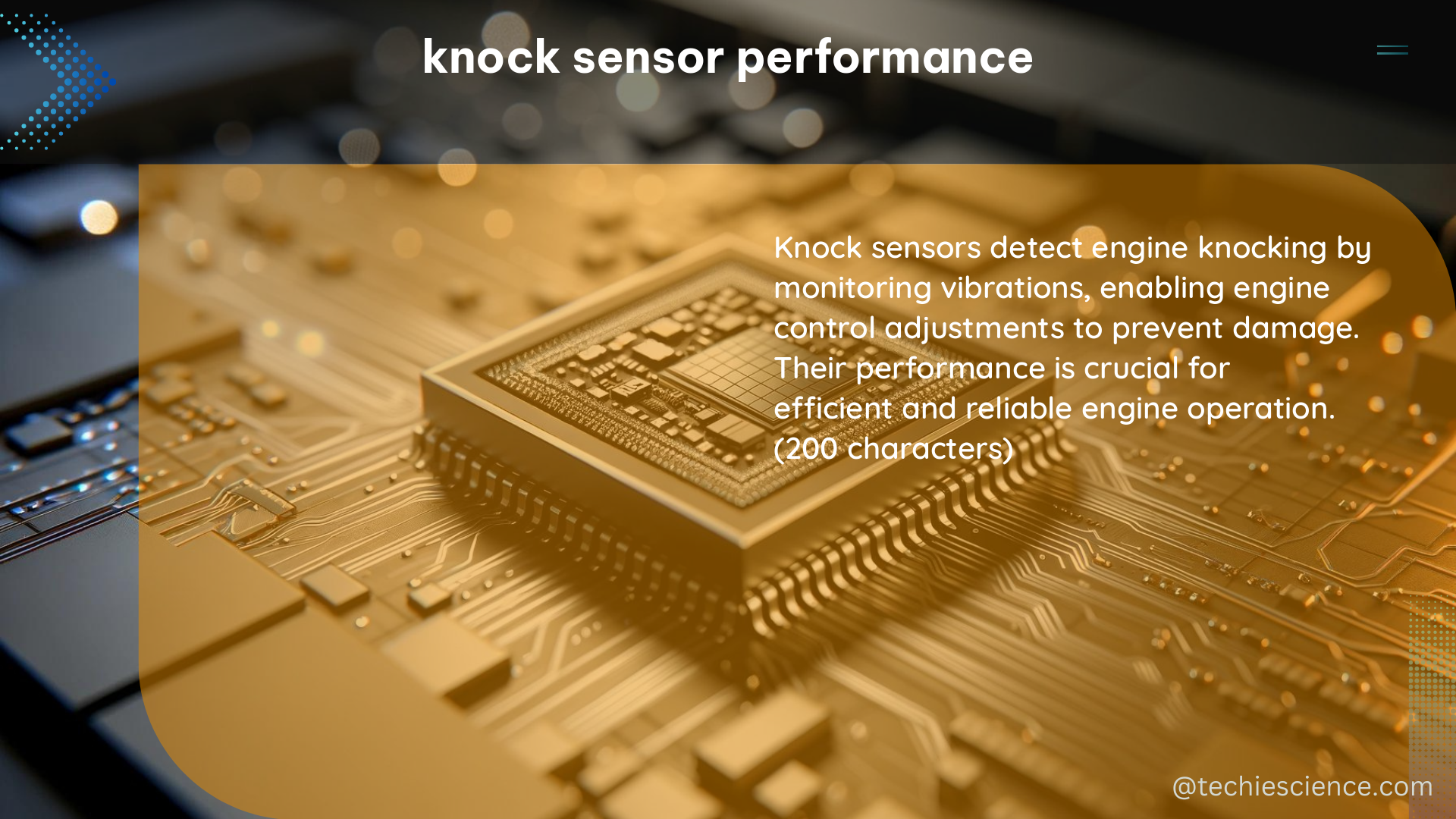Knock sensor performance is a critical factor in ensuring the efficient and reliable operation of internal combustion engines. These sensors play a vital role in detecting engine knocking, a phenomenon that can lead to significant engine damage and reduced performance. By converting engine vibrations into electrical signals, knock sensors enable the engine control module (ECM) to adjust ignition timing and prevent knocking, ultimately enhancing the overall engine performance.
Understanding Knock Sensor Performance Metrics
The performance of a knock sensor can be evaluated based on several key metrics:
Sensitivity
Sensitivity refers to the sensor’s ability to detect knocking at low levels. A highly sensitive knock sensor can identify even minor variations in engine vibrations, allowing for precise adjustments to the ignition timing.
Response Time
Response time is the time it takes for the knock sensor to respond to changes in knocking intensity. Faster response times enable the ECM to make timely adjustments, ensuring optimal engine performance.
Detection Limit
The detection limit is the minimum level of knocking that the sensor can reliably detect. A lower detection limit allows the sensor to identify even the slightest instances of knocking, preventing potential engine damage.
Measuring Knock Sensor Performance

Researchers have employed various techniques to evaluate the performance of knock sensors. One study, conducted by Camila Ayala et al., utilized a cupferron solution and double-potential pulse chrono-amperometry to assess a knock sensor’s performance.
The results of this study showed that the sensor had a linear response in the concentration range of 1.85×10^-10 to 3.70×10^-6 mol/L, with a detection limit of 0.025 parts per billion (ppb). This exceptional sensitivity and low detection limit make the sensor highly suitable for detecting knocking in internal combustion engines.
Optimizing Knock Sensor Performance
In addition to the sensor’s inherent capabilities, other factors can contribute to the overall performance of a knock sensor system. High-performance phenotyping (HTP) strategies and platforms, for instance, can play a crucial role in optimizing the acquisition of data from individual plants and large crop plots.
These techniques allow farmers and breeders to access real-time data on the status of their crops, enabling improved crop management and the proper selection and optimization of species as a function of microclimate and soil conditions. While not directly related to knock sensor performance, these advancements in data acquisition and analysis can indirectly contribute to the overall optimization of engine systems.
DIY Approaches to Knock Sensor Performance
For those interested in measuring and improving knock sensor performance, there are several DIY resources available. One such tool is the GT Suite software, which can be used to model the engine and powertrain of a race car, including geometrical and mechanical values that may not be readily available in standard mending directives.
Furthermore, methods for aerodynamic analysis of race cars can be developed using numerical calculation and visualization techniques. These include the determination of aerodynamic drag force and its coefficient (cx), as well as the analysis of pressure distribution on the car surface and air flow lines along the vehicle.
By leveraging these DIY tools and techniques, enthusiasts and hobbyists can gain a deeper understanding of knock sensor performance and explore ways to optimize their engine systems for improved efficiency and reliability.
Conclusion
Knock sensor performance is a critical aspect of internal combustion engine operation, with sensitivity, response time, and detection limit being the key metrics to consider. Ongoing research and advancements in areas like high-performance phenotyping and DIY tools for engine modeling and aerodynamic analysis can further enhance the understanding and optimization of knock sensor systems.
By staying informed about the latest developments in knock sensor technology and exploring DIY approaches, engine enthusiasts and professionals can ensure the optimal performance and longevity of their internal combustion engines.
References
- Camila Ayala et al., “Detection of Aluminum Ions in a Cupferron Solution Using a Glassy Carbon Electrode Modified by the Electrochemical Reduction of Bismuth in an Acetate Buffer,” Sensors, vol. 22, no. 20, p. 7515, Oct. 2022.
- Smart Power Silesian University of Technology racing team, “Methodology for Aerodynamic Analysis of Cars Built for the Shell Eco-marathon Race,” SAE Technical Paper 2014-01-2101, 2014.
- “J20A forced induction??,” auszookers.com, Jul. 2010.
- Portland Bureau of Transportation, “Ubiquitous Mobility for Portland,” Feb. 2016.
- “Analysis Techniques for Race Car Data Acquisition,” Academia.edu, 2016.

The lambdageeks.com Core SME Team is a group of experienced subject matter experts from diverse scientific and technical fields including Physics, Chemistry, Technology,Electronics & Electrical Engineering, Automotive, Mechanical Engineering. Our team collaborates to create high-quality, well-researched articles on a wide range of science and technology topics for the lambdageeks.com website.
All Our Senior SME are having more than 7 Years of experience in the respective fields . They are either Working Industry Professionals or assocaited With different Universities. Refer Our Authors Page to get to know About our Core SMEs.